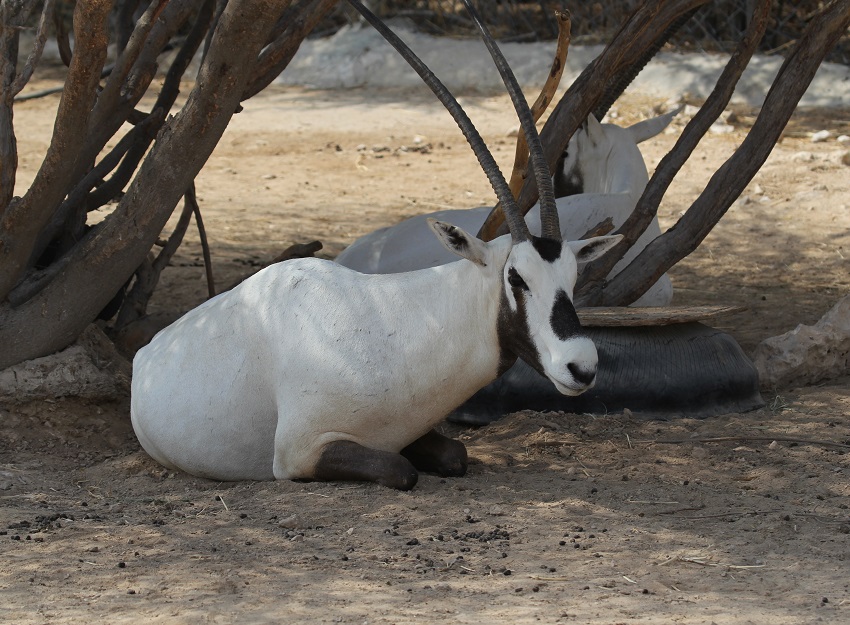

Name: Arabian Oryx, White Oryx
Common name: Arabian Oryx, White Oryx
Local name: Wudhaihi, Al Maha
Scientific name: Oryx leucoryx
Nature Reserves: Al Sheehaniya Reserve,Al Mashabiya Reserve
Size: 140
Habitat:
Arabian Oryx live in sand and gravel desert plains, and in low sand dunes. In summer, they rest in shade during the heat of the day, feeding at night, while in winter they feed during the day and shelter from cold desert winds at night. They can obtain almost all the water they need from the plants they eat, and by feeding at times when the plants are wet from dew or fog. They have been known to go without drinking water up to 6 months.
Habits:
Arabian Oryx can move up to 50 km in a night, and may be able to smell distant rainfall and move towards it to benefit from improved grazing. The diets of the Arabian Oryx consist mainly of grasses, but they will eat a large variety of vegetation, include trees, buds, herbs, fruit, tubers and roots. A single calf is born after eight to nine months gestation. Twins are rare.
Distribution:
The natural range of the Arabian Oryx covered most of the Arabian Peninsula, but hunting pressure resulted in the species being declared extinct in the wild by 1972. Oryx have been reintroduced to the wild from captive animals in a number of countries, and there are managed populations at several locations in Qatar.
Description:
Length: 140-177 cm, Tail length: 19-25 cm, Weight: 70 – 100 kg, Horn length: 70-75 cm
The Arabian Oryx is a medium-sized antelope. It is white in colour, with dark chocolate or black patches on the nose and cheeks. The legs and tail tip are also dark. The winter coat is longer and darker than that of summer. Arabian Oryx of both sexes have magnificent straight, ringed horns; those of the female are thinner and longer than the male.







